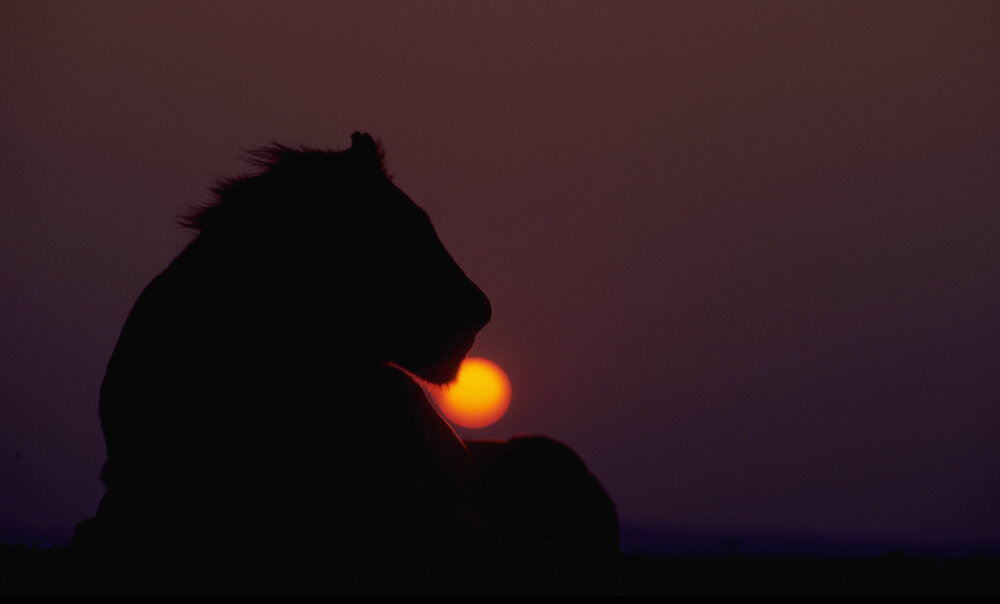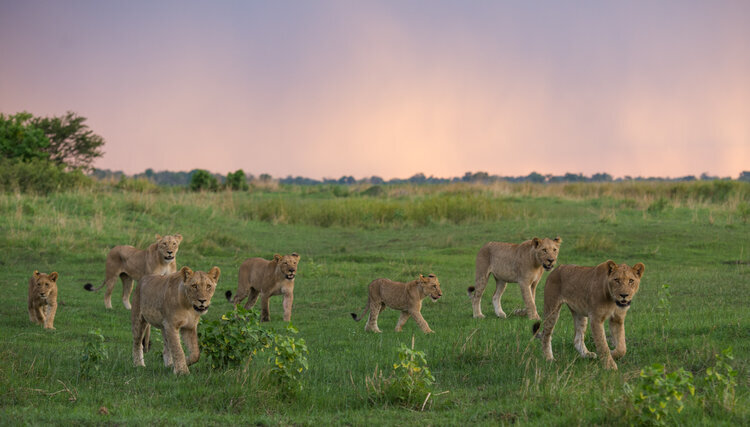Dr Paul Funston is an internationally recognised large carnivore biologist, having been involved in lion research and conservation for over 25 years. He is world renowned for his knowledge of lions across Africa. He is also an accomplished photographer having published a photographic essay of the bush experience ‘Spirit of the Bush’, and many popular scientific articles. As well as being Panthera’s Lion Senior Director, Dr Funston is also Panthera Regional Director: Southern Africa where he manages conservation efforts for all species of cats in the region.
Dr Paul Funston is one of the 53 celebrated photographers to be witnessed on the Xposure International Photography Festival’s platform this year in Sharjah. With only a few days to go for the region’s leading celebration of world photography, we got an exclusive peek into the life and motivations of this legendary wildlife photographer-conservator.
1. What stimulated your interest in wildlife/nature photography?
My father was the stimulus for most of my interests in life. Like me, he was a professional in another field. But he was very interested in photography and filmmaking, and I guess as a young boy all I ever wanted was to emulate my father and be as skilled and dedicated as him. One of my big thrills in life was publishing a photographic book with my father titled ‘Spirit of the Bush’.
2. What was the tipping point for you to dedicate your life to wildlife?
Although I was always interested in photography it was never really a career option for me. I always wanted to study wildlife and my dream was to be a scientist working on the management of wildlife in the Kruger National Park. I came close to realising that dream, but my PhD on lions in Kruger National Park led to my lifelong passion of researching, conserving, and, at times, photographing lions.
3. What is favourite subject to photograph? Have you developed and specific strategies to photograph them?
Lions. I just wish they were active more often in the hours of the day with some sunlight. I should get up earlier more often, but it does get a bit dull when you go out and come back with zero images and then still need to work all day. Thus, I mainly take photographs of lions resting at sunset. I wish I got to see them active more often.

4. Wildlife photography can be tricky in that everybody photographs the same set of animals in similar backgrounds, and there is no way you can manipulate them for different angles/sets. How do you ensure that you capture the fleeting moments of moods and emotions that can make a different/unique picture? How do you ensure creativity in such situations?
I realised many years ago that I was never truly going to compete with professional photographers capturing dramatic action sequences with lions and birds in flight, and such. I did not have the time to dedicate to developing the skill and could not afford the lenses and top-end cameras. Thus, I developed my own style, particularly when studying lions in Kruger National Park for my PhD. I wanted to photograph lions in the lowest light possible and I wanted to catch the most dramatic colours. I wanted to take beautiful photographs. My greatest compliment was when a university professor said, “You can see it is a Paul Funston photograph”.
That was my style for a long time. These days I don’t spend as much time with lions in such intensely low light situations. I have replaced this intense passion with another skill learnt from my father: photographing lions and wildlife in texture. The grass, twigs, bushes, stumps and all the dramatic settings they can be found in. Still, I will always photograph them in very low light or backlight if I can. That is my style and, if nothing else it, rewards me.
5. Which do you feel is your quintessential photo that sums up the gamut of your experiences?
I don’t really have a quintessential photograph, but one comes to mind. It is a photograph of four male lions on a buffalo carcass as the mist lifted of the grass after I followed them all night. Exhausted, but seeking absolute steadiness to shoot at my favourite setting on Fuji Velvia 50 ISO film – f4 and 1/15 th of a second, you can say it has my signature. It is so much easier these days with digital cameras where one can set the ISO for each image, but somehow the colours are not the same and the sense of achievement is far less.
It is not as rewarding but learning how to enhance the images to replicate what you saw is enjoyable.

6. Which has been your most difficult assignment/animal to photograph, so far? How did you tackle it?
I don’t really take photographic assignments as a professional conservation scientist, but all the photographic challenges I set myself are hard because I want that low light. The hardest part of it is accepting how poorly digital cameras record warm colours, or, more likely, I have not learnt how to edit them yet.
7. Is wildlife photography situation-driven rather than subject-driven? If you find an animal in a good light and situation, would you rather spend time photographing it, rather than chasing after more ‘exciting’ animals?
I will always stop and spend time with any subject in good light. But where I can I will try and be with lions or any other carnivore before the magic hour, hoping that today I am going to get something special. Mostly I don’t, but sometimes I am lucky. However, nothing beats those years when I was doing my PhD and used to follow lions all through the night. Then I found myself in many good situations although the night photographs seldom do it for me.
8. Do you believe in activism? Is your photography a form of activism to bring to light the plight of animals?
As a conservation scientist working for Panthera I believe that good science will inform policy and action. And usually it does. However, every now and then issues need a good dose of activism to resolve. For example, the captive breeding of lions and the selling of their bones and body parts to Asian countries. That is a terrible blight on the good track record of South Africa in conservation and needs to be stopped by whatever means. On that issue I have no qualms being an activist.

9. Do you have a wish-list of shots that are still eluding you? Like an animal you have not been able to shoot, or it doing something that you would like to capture?
I would still like to photograph lions making a dramatic kill in very low and warm light. But as those images may not work for all people, I am happy if that does not happen. I will take what I can get.

